Artificial Intelligence (AI) is no longer confined to the realm of science fiction; it has become an integral part of our daily lives. AI is ubiquitous. But how does this seemingly magical technology actually work? Underneath the hood, AI relies on a fascinating interplay of algorithms, data, and computing power. In this blog, we’ll dive into the inner workings of AI, exploring key concepts like symbolic AI, artificial neural networks (ANNs), and the intricate process of neural network training.
Big Question : How AI Works?
Over the course of the last five decades, artificial intelligence (AI) has undergone a continuous process of evolution. In order to gain insights into the intricate workings of AI, it is imperative to trace its development from its inception to the present day. To cultivate a comprehensive understanding, our exploration will commence with an examination of the inaugural phase, focusing on the early AI methodologies commonly known as ‘symbolic AI.’ Despite the potential for obsolescence, these methods remain remarkably relevant and have found successful applications across diverse domains.
A pivotal aspect of comprehending how AI functions involves an exploration of symbolic AI, as it serves as the foundation for subsequent advancements. Moving forward, our investigation will extend to the realm of Human Neural Networks, providing a deeper understanding of the intricate workings of the human brain. By unraveling the complexities of symbolic AI and delving into the mechanics of the human brain, we pave the way for a more nuanced exploration of the functionality of Artificial Neural Networks (ANNs).
First wave: symbolic artificial intelligence
Symbolic AI denotes the methodology of creating intelligent machines through the encapsulation of expert knowledge and experience into sets of rules executable by the machine. This form of AI is labeled symbolic due to its reliance on symbolic reasoning, exemplified by logic structures such as “if X=Y and Y=Z then X=Z,” to represent and resolve problems. From the 1950s to the 1990s, symbolic AI was the predominant approach in AI applications. Although contemporary AI landscapes are dominated by different methodologies, symbolic AI remains employed in various contexts, ranging from thermostats to cutting-edge robotics. This discussion delves into two prevalent approaches within symbolic AI: expert systems and fuzzy logic.
Expert Systems
In these systems, a human with expertise in the application’s domain creates specific rules for a computer to follow. These rules, known as algorithms, are usually coded in an ‘if-then-else’ format. For instance, when crafting a symbolic AI doctor, the human expert might begin with the following pseudocode:

Symbolic AI is often described as “keeping the human in the loop” because its decision-making process closely mirrors how human experts make decisions. Essentially, the intelligence within the system is derived directly from human expertise, which is recorded in a format that the computer can comprehend. This “machine-readable” format allows humans to easily comprehend the decision-making process. Moreover, it enables them to identify errors, discover opportunities for program enhancement, and make updates to the code accordingly. For instance, one can incorporate clauses to address specific cases or integrate new medical knowledge into the system.

The example highlights a fundamental limitation of this type of expert system. To create a practical and dependable system capable of addressing intricate and dynamic real-world challenges, such as the responsibilities of a medical doctor, an abundance of rules and exceptions would be necessary. Consequently, the system would rapidly become intricate and extensive. Symbolic AI excels in environments with minimal changes over time, where rules are stringent, and variables are clear-cut and quantifiable. An illustration of such an environment is the computation of tax liability. Tax experts and programmers can collaborate to formulate expert systems that implement the current rules for a specific tax year. When provided with data describing taxpayers’ income and relevant circumstances, the tool can compute tax liability, incorporating applicable levies, allowances, and exceptions.
Fuzzy logic: capturing intuitive expertise
In the expert system mentioned earlier, each variable is binary — either true or false. The system relies on absolute answers to questions like whether a patient has a fever, often simplified to a straightforward calculation based on a temperature reading above 37 °C. However, reality is often more nuanced. Fuzzy logic offers an alternative approach to expert systems, enabling variables to possess a ‘truth value’ between 0 and 1. This value reflects the degree to which the variable aligns with a particular category.
Fuzzy logic proves valuable in scenarios where variables are uncertain and interrelated, allowing for a more nuanced representation. For instance, patients can be assigned a rating indicating how well they fit the fever category, which may consider factors like temperature, age, or time of day. This flexibility accommodates cases where a patient might be considered a borderline case.
Fuzzy logic finds practical application in capturing intuitive knowledge, where experts excel in making decisions amidst wide-ranging and uncertain variables. It has been employed in developing control systems for cameras that autonomously adjust settings based on prevailing conditions. Similarly, in stock trading applications, fuzzy logic helps establish rules for buying and selling under diverse market conditions. In both instances, the fuzzy system continuously evaluates numerous variables, adheres to rules devised by human experts to adjust truth values, and leverages them to autonomously make decisions.
Good old-fashioned artificial intelligence
Symbolic AI systems necessitate human experts to encode their knowledge in a format understandable to computers, imposing notable constraints on their autonomy. While these systems can execute tasks automatically, their actions are confined to explicit instructions, and any improvement is contingent upon direct human intervention. Consequently, Symbolic AI proves less effective in addressing intricate issues characterized by real-time changes in both variables and rules. Regrettably, these are precisely the challenges where substantial assistance is needed. The complexity of a doctor’s domain knowledge and expertise, evolving continually over time, cannot be comprehensively captured by millions of ‘if-then-else’ rules.
Despite these limitations, Symbolic AI is far from obsolete. It demonstrates particular efficacy in supporting humans tackling repetitive issues within well-defined domains, such as machine control and decision support systems. The consistent performance of Symbolic AI in these areas has affectionately earned it the moniker of ‘good old-fashioned AI.’
ANNs: Inspiration from the Human Brain
Contemporary AI, specifically machine learning, excels in enhancing various tasks such as capturing high-quality photos, translating languages, identifying acquaintances on social media platforms like Facebook, generating search outcomes, filtering out unwanted spam, and handling numerous other responsibilities. The prevalent methodology employed in this technology involves neural networks, mimicking the intricate functioning of the human brain, as opposed to the conventional computing paradigm based on sequential IF THIS, THEN steps.
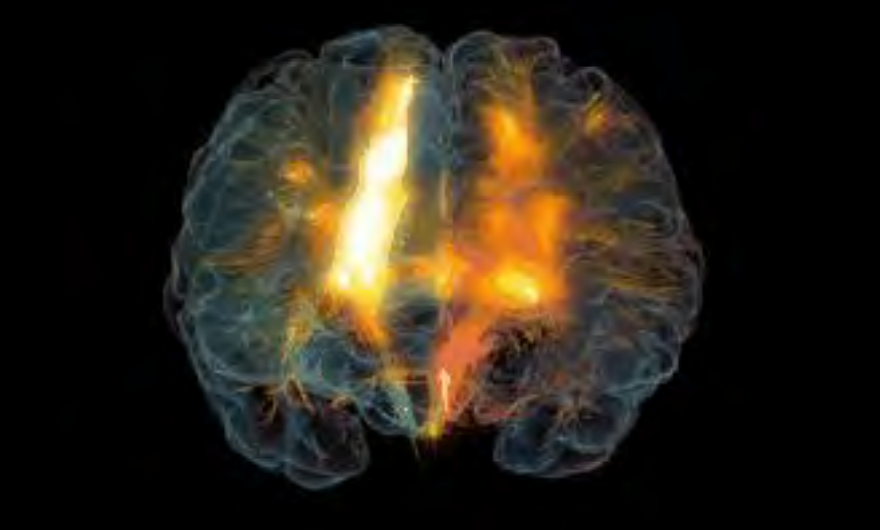
Understanding the human brain and its neural network is crucial before delving into the second wave of AI dominated by machine learning (ML) and deep learning, where ANNs(Artificial Neural Networks) play a significant role. Let’s delve into a brief review of the human brain and the neurons within it before discussing artificial neural networks.
The Human Brain
The human brain is indeed divided into different lobes, each responsible for various functions. The four main lobes are the frontal lobe, parietal lobe, temporal lobe, and occipital lobe. Additionally, the cerebellum is a distinct structure located at the back of the brain, below the occipital lobe.
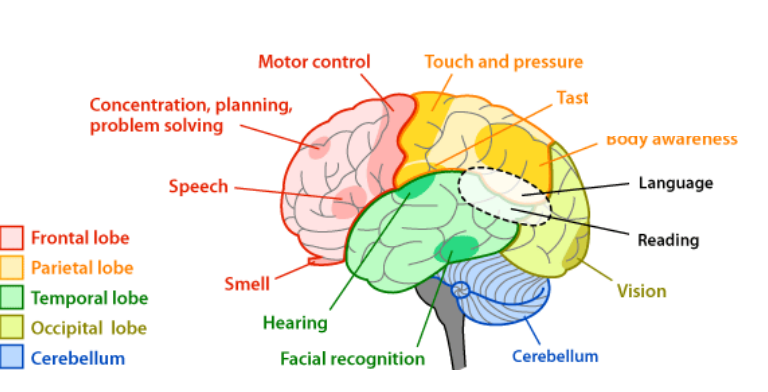
- Frontal Lobe: This lobe is located at the front of the brain and is associated with functions such as reasoning, planning, problem-solving, emotions, and voluntary muscle movements.
- Parietal Lobe: Situated near the top and back of the brain, the parietal lobe is responsible for processing sensory information it receives from the outside world, such as spatial sense and navigation (proprioception), the main sensory receptive area for the sense of touch.
- Temporal Lobe: Found on the sides of the brain, the temporal lobe is involved in processing auditory information and is also important for the processing of semantics in both speech and vision. The hippocampus, a key structure for memory, is located within the temporal lobe.
- Occipital Lobe: Positioned at the back of the brain, the occipital lobe is primarily responsible for processing visual information from the eyes.
- Cerebellum: The cerebellum is located at the back and bottom of the brain, underneath the occipital lobe. It is crucial for coordinating voluntary movements, balance, and posture. Despite its relatively small size compared to the rest of the brain, the cerebellum plays a vital role in motor control and motor learning.
Each lobe and the cerebellum has specific functions, and they work together to enable various cognitive and motor functions in humans.
Types and Function of Neurons
Neurons play a vital role in executing all functions performed by our body and brain. The intricacy of neuronal networks is responsible for shaping our personalities and fostering our consciousness. Approximately 10% of the brain is comprised of neurons, with the remainder consisting of supporting glial cells and other cells dedicated to nourishing and sustaining the neurons.
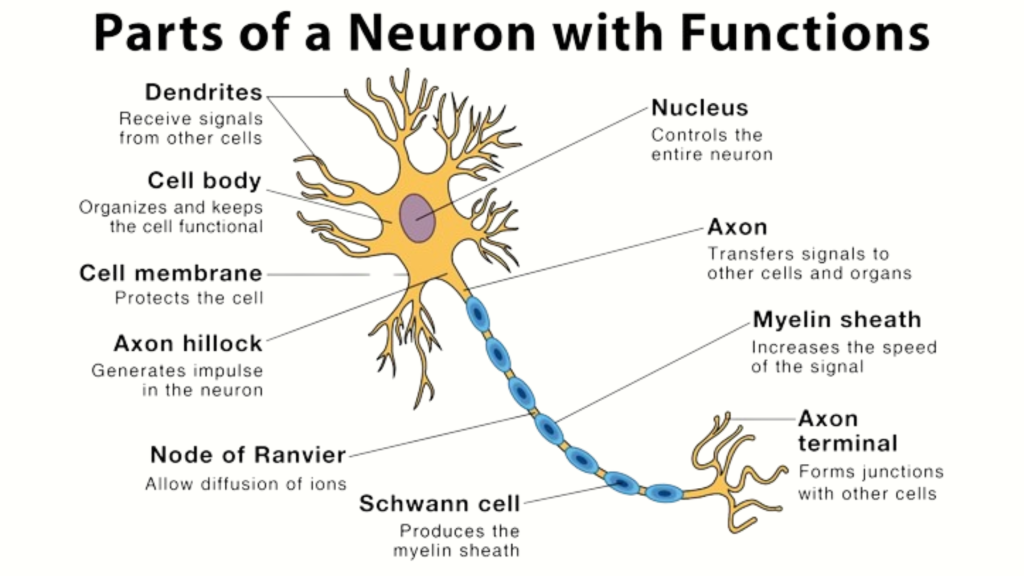
There are around 86 billion neurons in the brain. To reach this huge target, a developing fetus must create around 250,000 neurons per minute! Each neuron is connected to at least 10,000 others – giving well over 1,000 trillion connections (1 quadrillion connections). They all connect at a junction called a synapse, which can be electrical or a higher percentage of them are chemical, we will discuss them in more detail soon.
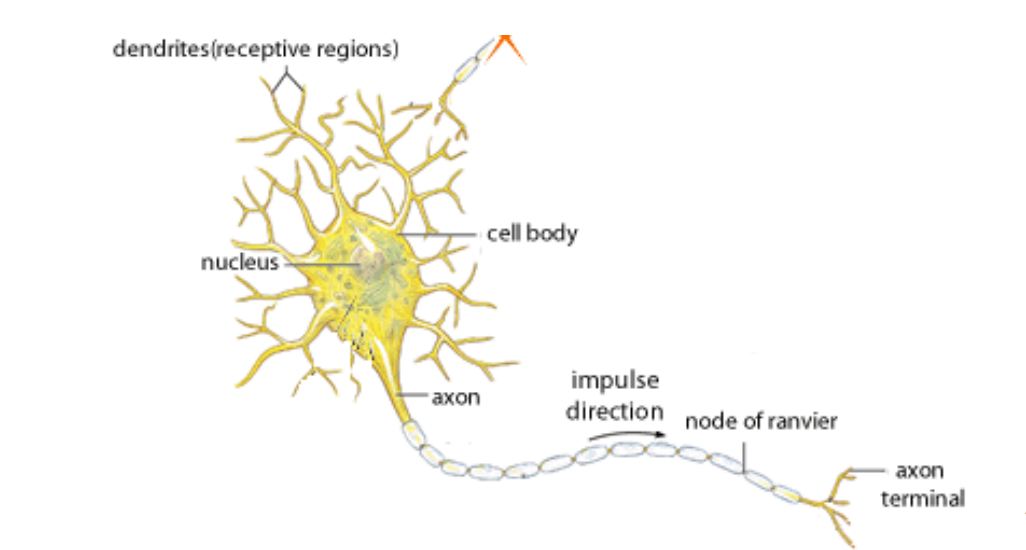
Signals received by neurons can be categorized as either excitatory, encouraging the neuron to generate an electrical impulse, or inhibitory, hindering the neuron from firing. A singular neuron may possess multiple sets of dendrites, receiving a multitude of input signals. The decision for a neuron to fire an impulse is contingent upon the cumulative effect of all received excitatory and inhibitory signals. If the neuron does undergo firing, the nerve impulse is transmitted along the axon.
The Process of Synapses
Neurons establish connections at specific sites known as synapses to facilitate communication of messages. Remarkably, at these points of connection, none of the cells physically touch each other! The transmission of signals from one nerve fiber to the next occurs through either an electrical or a chemical signal, achieving speeds of up to 268 miles per hour.
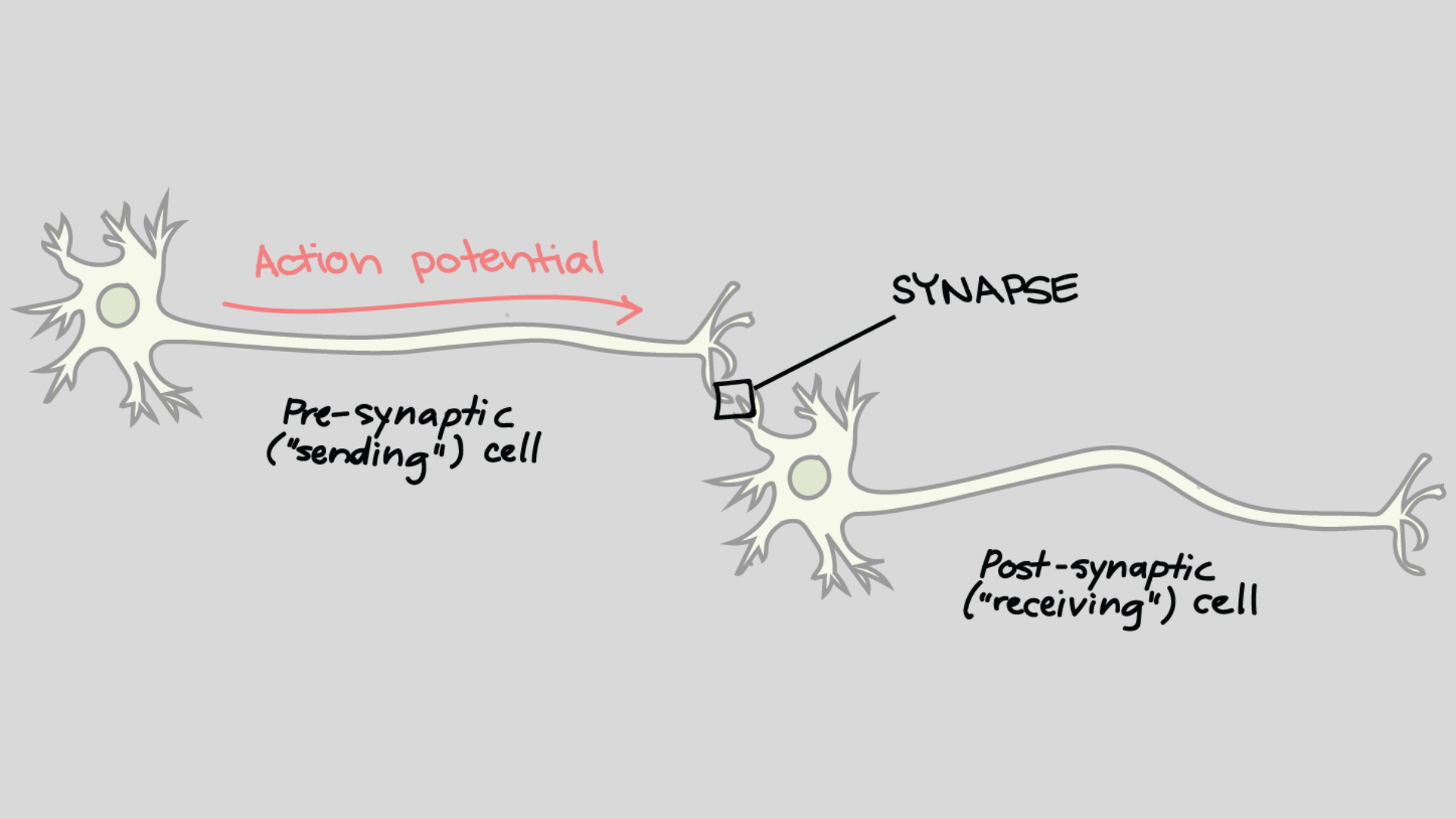
Recent evidence suggests a close interaction between both types of signals, indicating that the transmission of nerve signals involves a combination of chemical and electrical processes, essential for normal brain development and function.
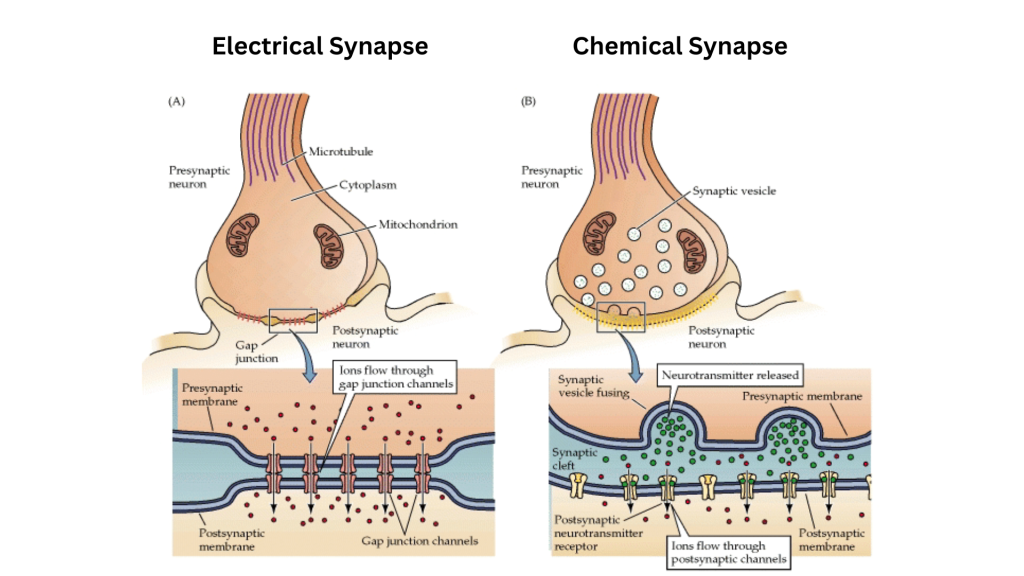
If you don’t use a foreign language you learned years ago or mathematics, the neurons used for those things will move the synapses away from each other so they can do other things that you are learning to do. This is called Synaptic Pruning.
Artificial Neural Network (ANN)
A human neural network refers to the interconnected network of neurons in the human brain. Neurons are the fundamental units of the nervous system, responsible for transmitting signals and information. The architecture of artificial neural networks (ANNs) is inspired by the organization and functioning of these biological neural networks.
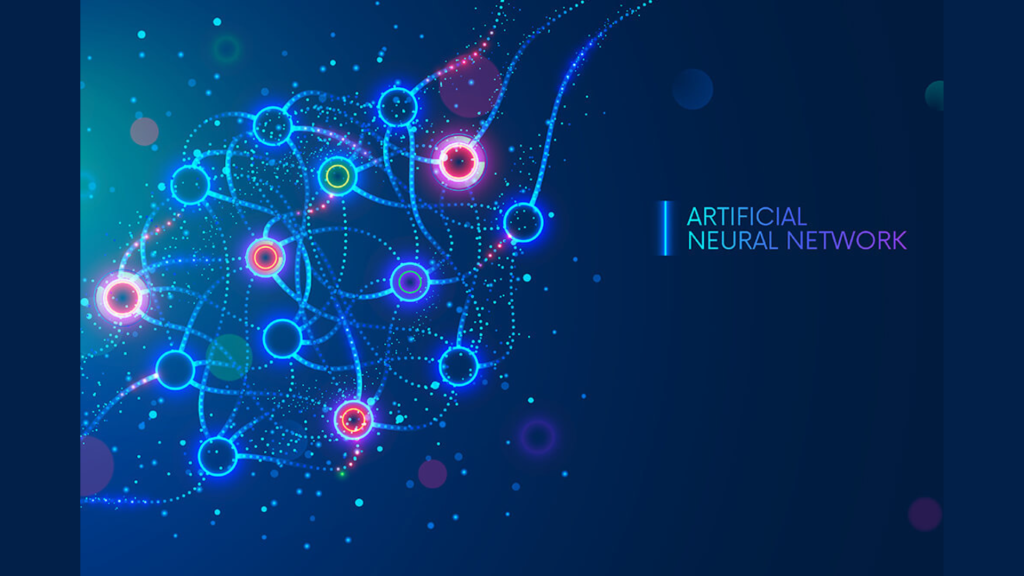
In the context of the human brain, a neuron receives input signals from multiple other neurons through its dendrites. These inputs are then processed in the cell body, and if the accumulated signals surpass a certain threshold, the neuron “fires,” sending an output signal through its axon to communicate with other neurons.
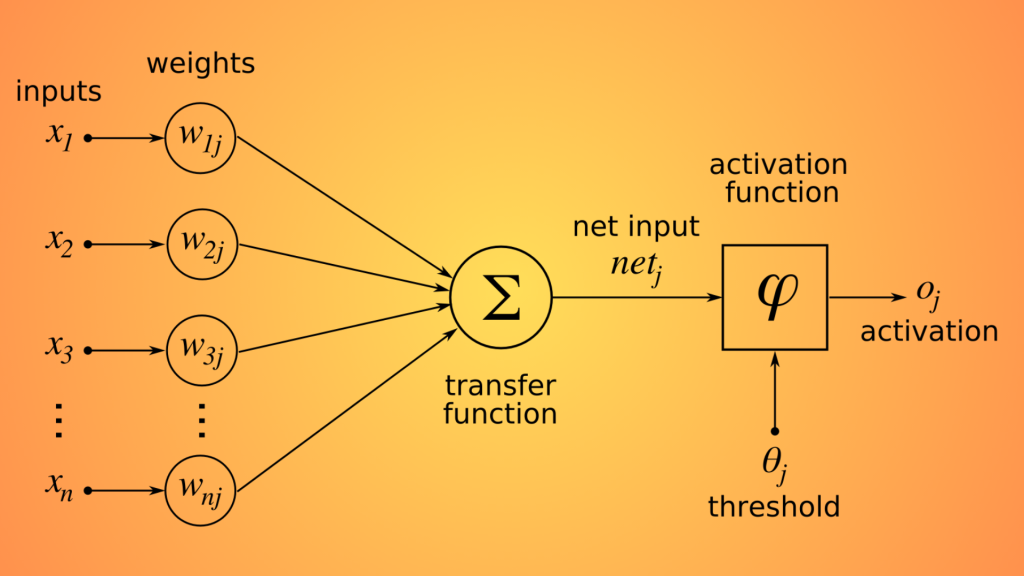
The analogy with artificial neural networks is that a simple artificial neuron, also known as a perceptron, takes input from multiple sources, each with an associated weight. These inputs are then combined, and if the sum exceeds a certain threshold, the artificial neuron activates and produces an output. The activation function is often used to determine whether the neuron should be activated based on the weighted sum of inputs.
In both cases, the idea is to model the way information is processed and transmitted through interconnected nodes. While ANNs are a simplified abstraction of the complex biological neural networks found in the human brain, they provide a powerful computational framework for various tasks, including pattern recognition, classification, and decision-making.
Fundamental Structure of an ANN
As we know now, Artificial Neural Networks (ANNs) derive inspiration from the electro-chemical neural networks observed in human and other animal brains. While the precise workings of the brain remain somewhat enigmatic, it is established that signals traverse a complex network of neurons, undergoing transformations in both the signal itself and the structure of the network. In ANNs, inputs are translated into signals that traverse a network of artificial neurons, culminating in outputs that can be construed as responses to the original inputs. The learning process involves adapting the network to ensure that these outputs are meaningful, exhibiting a level of intelligence in response to the inputs.
ANNs process data sent to the ‘input layer’ and generate a response at the ‘output layer.’ Intermediate to these layers are one or more ‘hidden layers,’ where signals undergo manipulation. The fundamental structure of an ANN is depicted in below Figure, offering an illustrative example of an ANN designed to predict whether an image depicts a cat. Initially, the image is dissected into individual pixels, which are then transmitted to neurons in the input layer. Subsequently, these signals are relayed to the first hidden layer, where each neuron receives and processes multiple signals to generate a singular output signal.
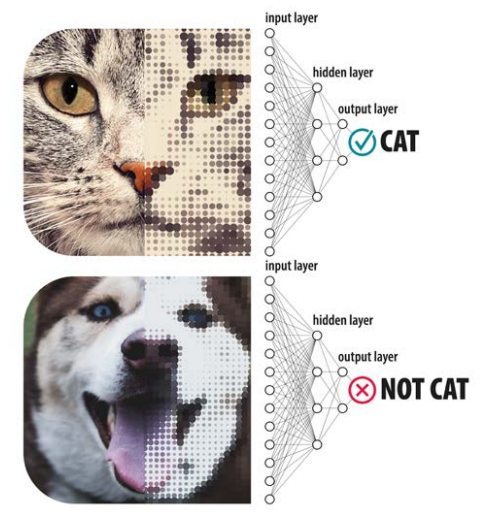
While above Figure showcases only one hidden layer, ANNs typically incorporate multiple sequential hidden layers. In such cases, the process iterates, with signals traversing each hidden layer until reaching the final output layer. The signal produced at the output layer serves as the ultimate output, representing a decision regarding whether the image portrays a cat or not.
Deep learning specifically denotes ANNs with at least two hidden layers, each housing numerous neurons. The inclusion of multiple layers enables ANNs to create more abstract conceptualizations by breaking down problems into smaller sub-problems and delivering more nuanced responses. While theoretically, three hidden layers might be adequate for solving any problem, practical ANNs often incorporate many more. Notably, Google’s image classifiers utilize up to 30 hidden layers. The initial layers identify lines as edges or corners, the middle layers discern shapes, and the final layers assemble these shapes to interpret the image.
Training Neural Networks
Training a Neural Network involves exposing it to a large dataset and adjusting the weights to minimize the difference between the predicted output and the actual output. This process is known as backpropagation, where the network learns by iteratively updating the weights based on the calculated errors.
The training phase allows the Neural Network to generalize from the provided data, enabling it to make accurate predictions on new, unseen data. The success of a Neural Network often depends on the quality and diversity of the training data.
Deep Learning, a subfield of machine learning, introduces deep neural networks with multiple hidden layers. Deep Learning has revolutionized AI by enabling the extraction of hierarchical features and representations, making it suitable for complex tasks.
For example : Train a neural network to recognize an eagle in a picture
Training a neural network involves adjusting its internal parameters, such as weights and thresholds, so that it can perform a specific task effectively. The output of the artificial neuron is binary, taking on a value of 1 if the sum of the weighted inputs surpasses the threshold and 0 otherwise.

Train a neural network to recognize an eagle in a picture by using a labeled dataset and configuring the network to output probabilities for each pixel, where a value of 1 indicates the presence of an eagle and 0 indicates absence.
Conclusion:
Artificial Intelligence, with its foundations in Symbolic AI and the transformative power of Neural Networks, has evolved into a sophisticated tool capable of emulating human-like intelligence. Symbolic AI provides structured, rule-based decision-making, while Neural Networks leverage the complexity of interconnected artificial neurons to excel in pattern recognition and learning from vast datasets. As technology advances, the synergy between these approaches continues to drive the evolution of AI, promising a future where machines can emulate human cognition with unprecedented accuracy and efficiency.
